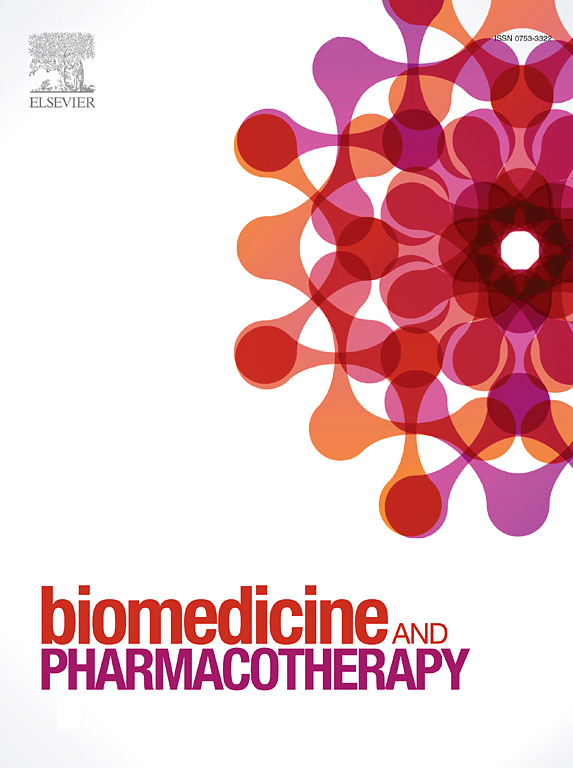Recombinant soluble type I interferon receptor exerts antiviral activity by inducing proteins related to autophagy
IF 6.9
2区 医学
Q1 MEDICINE, RESEARCH & EXPERIMENTAL
引用次数: 0
Abstract
The soluble type I IFN receptor (sIFNAR2) is produced by alternative splicing and is present in body fluids. Although it can modulate IFN-ß activity, its biological role remains unknown.
Methods
An in-silico study was conducted to compare the structure of recombinant human soluble IFNAR2 (r-sIFNAR2) with its native form. The antiviral activity of r-sIFNAR2, produced in BL21-bacteria and CHO cells, was tested using a cytopathic effect assay including appropriate controls. Viability and toxicity were assessed by MTT assays. Proteomic analysis using mass spectrometry was conducted in the A549/EMCV bioassay to elucidate the mechanism of action, and then it was validated by Western blot.
Results
The BL21-sIFNAR2 had a sequence identity of 83.6 % with the native form, showing variations only in terminal regions. BL21-sIFNAR2 and CHO-sIFNAR2 showed significantly higher percentage of cell viability compared to the viral control, similar to IFN-ß. Cell viability with BL21-sIFNAR2 was comparable to the cell control across all tested concentrations.
Proteomic analysis revealed an up regulation of pathways related with autophagy (macroautophagy, autophagy, pexophagy, and mitophagy) with an SQSTM1 overexpression that was then confirmed by Western Blot, especially after virus infection. However, pathways related to interferon signaling, and antiviral mechanisms mediated by IFN-stimulated genes were down-regulated.
Conclusion
r-sIFNAR2 exhibits significant antiviral activity regardless of the expression system used for its production and good safety profile, suggesting its use as a potential antiviral drug. Proteins related to autophagy are involved in the protection from the virus. This study highlights the biological relevance of soluble cytokine receptors as effectors so far overlooked.
重组可溶性 I 型干扰素受体通过诱导自噬相关蛋白发挥抗病毒活性。
可溶性 I 型 IFN 受体(sIFNAR2)是通过替代剪接产生的,存在于体液中。虽然它能调节 IFN-ß 的活性,但其生物学作用仍不清楚:方法:研究人员进行了一项体内研究,以比较重组人可溶性 IFNAR2(r-sIFNAR2)与其原生形式的结构。在 BL21-细菌和 CHO 细胞中产生的 r-sIFNAR2 的抗病毒活性通过细胞病理效应试验(包括适当的对照)进行了测试。活力和毒性通过 MTT 试验进行评估。在 A549/EMCV 生物测定中使用质谱进行了蛋白质组分析,以阐明其作用机制,然后通过 Western 印迹进行了验证:结果:BL21-sIFNAR2与原生型的序列一致性为83.6%,仅在末端区域存在差异。与病毒对照相比,BL21-sIFNAR2 和 CHO-sIFNAR2 的细胞存活率明显更高,与 IFN-ß 相似。在所有测试浓度下,BL21-sIFNAR2 的细胞存活率与细胞对照相当。蛋白质组分析表明,随着 SQSTM1 的过表达,与自噬相关的通路(大自噬、自噬、pexophagy 和 mitophagy)受到了上调,这一点随后通过 Western 印迹得到了证实,尤其是在病毒感染后。结论:无论使用哪种表达系统生产 r-sIFNAR2,它都具有显著的抗病毒活性和良好的安全性,这表明它可用作一种潜在的抗病毒药物。与自噬相关的蛋白质参与了病毒防护。这项研究强调了可溶性细胞因子受体作为效应因子的生物学相关性,而这种效应因子至今仍被忽视。
本文章由计算机程序翻译,如有差异,请以英文原文为准。
求助全文
约1分钟内获得全文
求助全文
来源期刊
CiteScore
11.90
自引率
2.70%
发文量
1621
审稿时长
48 days
期刊介绍:
Biomedicine & Pharmacotherapy stands as a multidisciplinary journal, presenting a spectrum of original research reports, reviews, and communications in the realms of clinical and basic medicine, as well as pharmacology. The journal spans various fields, including Cancer, Nutriceutics, Neurodegenerative, Cardiac, and Infectious Diseases.

 求助内容:
求助内容: 应助结果提醒方式:
应助结果提醒方式:


